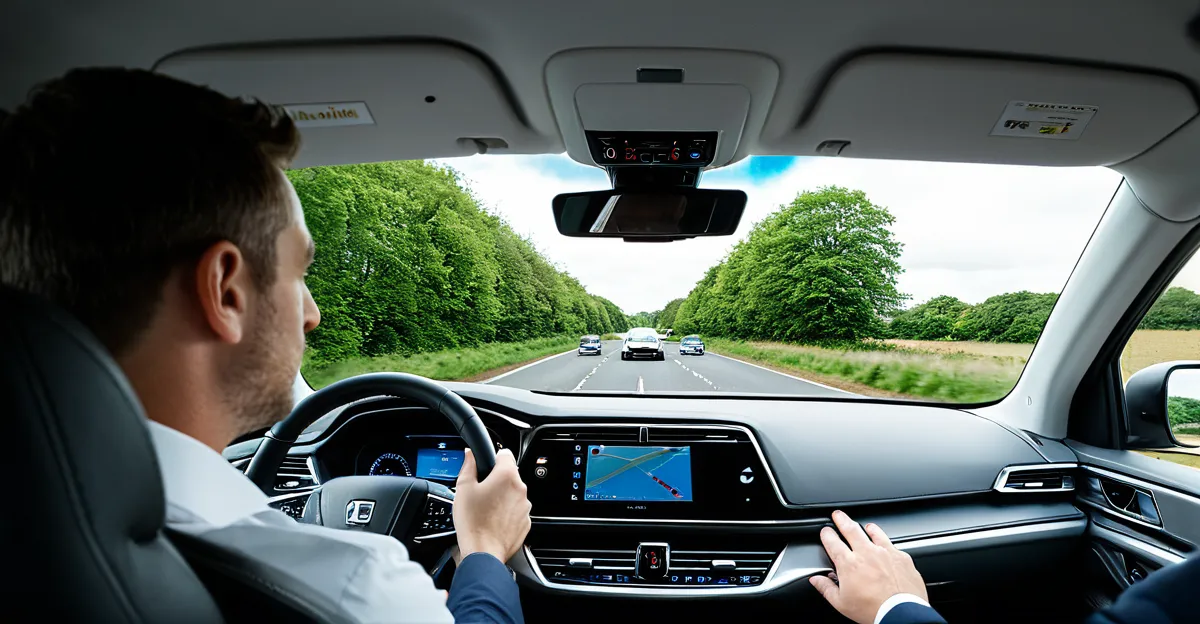Overview of UK Legislative Approaches to Autonomous Vehicles
The UK autonomous vehicle legislation has evolved steadily to accommodate the rapid development of self-driving technologies. The government policy focuses on creating a robust regulatory framework that supports innovation while addressing key legal challenges. Central challenges include establishing clear liability rules when autonomous systems are involved in incidents and adapting existing transport laws to cover new technical realities.
Authorities recognize the complex nature of integrating autonomous vehicles into public roads. This necessitates a comprehensive approach to regulations that align vehicle safety standards with the unpredictable scenarios automated driving may present. The UK regulatory framework aims not only to foster technological advancement but also to protect road users and ensure public confidence.
Also read : How Will Electric Vehicles Adapt to the UK’s Climate Challenges?
Creating this framework involves balancing innovation with caution. The government has prioritized regulatory developments that provide clarity on operational parameters, testing protocols, and data handling requirements. This proactive stance helps mitigate risks related to liability and safety, setting the groundwork for future policy updates as the technology matures.
By addressing these challenges head-on, the UK cultivates an environment where autonomous vehicles can be deployed responsibly. This measured approach to legislation illustrates the commitment to both the advancement and safe integration of autonomous driving technologies on UK roads.
Also to read : How Is Innovation Influencing the Future of the UK Automotive Industry?
Recent Legislative Developments and Policy Frameworks
The Automated Vehicles Act stands as a cornerstone in the UK’s legislative progress, directly addressing the legal landscape for self-driving cars. Enacted to clarify liability issues, this law shifts certain responsibilities to the vehicle’s insurer once autonomous mode is activated, streamlining claims processes for incidents involving automated vehicles. Consequently, this represents a significant regulatory development supporting wider deployment of autonomous technologies.
Recent government consultations have sought public and expert input on refining the regulatory approach. These consultations emphasize adaptability, ensuring that emerging technical and ethical concerns around automation remain central to policy updates. The resulting white papers outline scenarios ranging from testing protocols to data governance, reflecting a comprehensive policy framework designed to evolve alongside technological advances.
This phase of legislation also reflects a balance between innovation and risk management. Updating the self-driving car laws consistently ensures legal clarity while safeguarding consumer rights and public welfare. The UK regulatory framework integrates findings from these consultations, maintaining a flexible stance that facilitates both industry growth and road safety.
Together, the Automated Vehicles Act and ongoing consultations form the backbone of the UK’s current government policy on autonomous vehicles. They exemplify how legislative tools and regulatory developments interact to support safe, responsible integration of self-driving technologies.
Addressing Safety and Liability Concerns
Ensuring vehicle safety standards is paramount in the UK regulatory framework for autonomous vehicles. The government policy mandates rigorous testing and certification before self-driving cars can operate on public roads. These standards cover system reliability, sensor accuracy, and fail-safe mechanisms to reduce accident risks. A robust liability framework clarifies responsibility when automated systems cause incidents. Under current laws, liability typically shifts to the vehicle’s insurer once the car is in autonomous mode. This simplifies claims processes and protects consumers by ensuring prompt compensation.
New reforms also address autonomous vehicle insurance requirements. Insurers must evaluate risks unique to automation, considering software faults and cyber threats alongside traditional causes. The regulatory developments encourage innovation but maintain strict oversight to uphold road safety. This includes mandatory data recording of driving events to aid in post-incident analysis.
Together, these measures create a comprehensive safety net. They guarantee autonomous vehicles meet high standards while providing clear legal recourse following accidents. This approach balances technological advancement with public protection, enhancing confidence in automated driving across the UK.
Tackling Data Privacy and Cybersecurity Issues
The UK regulatory framework places strong emphasis on data protection in autonomous vehicle operations. Government policy mandates strict compliance with GDPR standards, ensuring that personal data collected by self-driving cars is handled transparently and securely. This addresses concerns about user privacy, especially as autonomous vehicles generate vast amounts of sensitive information, including location and behavioral data.
In terms of cybersecurity, regulatory developments require comprehensive safeguards to prevent unauthorized access or manipulation of vehicle systems. Government guidelines outline protocols for secure software updates, encryption methods, and intrusion detection systems tailored to autonomous vehicle environments. These measures mitigate risks of hacking that could compromise safety or user data.
Moreover, regulations promote transparency in autonomous vehicle data usage, obliging manufacturers and operators to disclose what data is collected and how it is used. This approach aligns with wider data protection principles, fostering public trust while enabling the benefits of data-driven technology.
Together, these rules form a coherent cybersecurity and data privacy framework vital for the safe deployment of autonomous vehicles. They strike a balance between innovation and consumer protection, ensuring that legislative oversight keeps pace with evolving technological risks in this domain.
Stakeholder Engagement and Ongoing Regulatory Development
The UK regulatory framework emphasizes active stakeholder consultation to shape its autonomous vehicle policies. The government regularly collaborates with industry experts, academia, and the public to gather diverse perspectives. This engagement ensures that future policy reflects practical insights, emerging technology capabilities, and societal concerns.
Public feedback mechanisms, such as consultations and white papers, enable ongoing dialogue. These forums allow participants to highlight potential risks and suggest regulatory approaches, thus enhancing the transparency and responsiveness of legislation. Industry collaboration fosters innovation by aligning regulatory developments with market realities and technical feasibility.
Continuous regulatory adaptation is vital given rapid advances in autonomous systems. The government monitors technological progress and incorporates new data from trials and deployments, ensuring that the UK autonomous vehicle legislation remains effective and relevant. Such dynamic regulatory development mitigates legal uncertainties and supports safe integration.
By integrating stakeholder input and maintaining policy flexibility, the UK achieves a balanced approach. This strategy strengthens legal clarity and public trust, while encouraging sustainable growth of automated driving technologies. The commitment to ongoing consultation underscores the importance of evolving governance alongside autonomous vehicle innovation.

